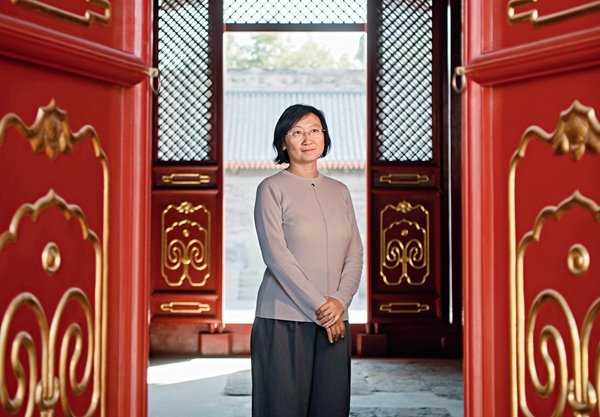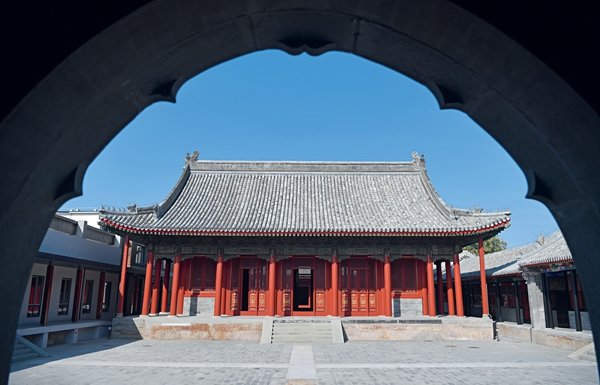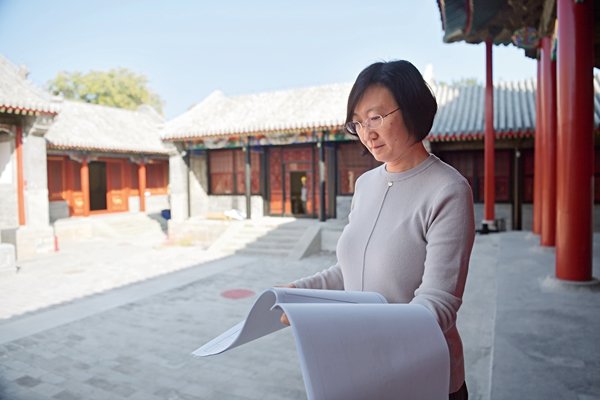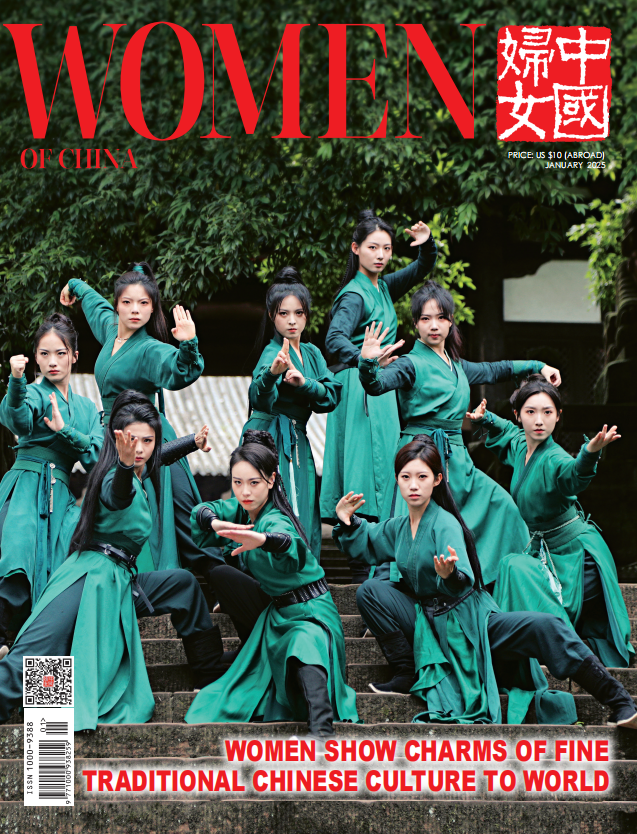'Polishing' History with Traditional Techniques

Zhang Yue works with Traditional Chinese Architectural Design Research Institute (TCADRI) Co., Ltd., which is under Beijing Capital Development Holding (Group) Co., Ltd. She has been responsible for repairing traditional buildings, including Yongshou Gong (Palace of Eternal Longevity), in Beijing's Palace Museum. She also helped design Yuantong Tower, in Guiyuan Temple (in central China's Hubei Province), and Changyou Tower (in south China's Guangxi Zhuang Autonomous Region).
In recent years, Zhang has participated in efforts to protect and renovate hutong and quadrangles (or siheyuan) in historic and cultural blocks of Beijing. During such efforts, she has explored ways of ensuring traditional architectural techniques remain useful in modern times.
Zhang began working in Beijing in 1999, after she graduated from university. Then, her office was in a quadrangle near Di'anmen Dongdajie, a historic block in Beijing. She still remembers how one morning, on her way to work, she mistakenly walked into Guangfu Temple, near Di'anmen. At that time, some residents lived in the Taoist temple. Zhang was attracted by the details of the traditional courtyards and houses in the temple. A parrot, kept by a resident, said, "zao shang hao" (good morning) to Zhang. The alleys were blanketed by the morning mist. That day, Zhang was affected by the unique historic atmosphere in Beijing.

Given her 25 years of work experiences, Zhang has realized just how precious hutong and traditional quadrangles are. "If one describes Palace Museum and the residences of the monarch as bright flowers, quadrangles are like leaves, and they are indispensable for flowers," says Zhang.
Zhang's first task at TCADRI was reading a book about traditional Chinese architectural techniques involving timber-framed structures. The book's author, Ma Bingjian, was director of TCADRI's research-and-consultation department. Zhang often asked Ma questions about the book.
"We insist on repairing traditional buildings with the techniques used in the Qing Dynasty (1616-1911). Although it can't be seen from the appearance, we must ensure future generations who renovate the buildings will be able to see clearly those techniques. We must pass down the historic relics, and the culture embodied in the relics, in an accurate way," says Zhang.
Timber-framed structures were the primary source of framing used in China's traditional architecture. The Hemudu Site, in Yuyao, a city in east China's Zhejiang Province, dates back about 5,300 to 7,000 years. Hundreds of wooden components with sunmao (the mortise-and-tenon joints) have been unearthed from remains of stilted houses at the site.

"Our work is to 'polish' history, to help traditional buildings maintain their charms, and to raise residents' awareness of protecting culture. I hope our work will help improve the regional cultural environment," says Zhang.
In 2005, under Ma's leadership, Zhang and her team participated in the construction of Yuantong Tower (in Guiyuan Temple). The team was required to build the tower with traditional techniques used for timber-framed buildings. "The tower has five floors. We had to deal with the difficulty of ensuring each floor had a different appearance, based on the tower's structure," says Zhang. Construction of the 51-meter-high tower was completed in 2012. One floor was made from stones, while the rest of the main structure was made from timber. Neither steel nor concrete was used.
As her understanding of the traditional architecture industry has deepened, Zhang has paid attention to more issues, including the supply of raw materials and training provided to craftspeople. The timber-framed structure is the essence of traditional architecture. To ensure the quality of raw materials, workers must control the moisture content of wood prior to construction.
When asked to describe the most impressive thing that has happened to her since she began working in the industry, Zhang tells the story about the first time she climbed on scaffolding to check the condition of an ancient building. The building, in Beijing, was three floors high. She and her colleagues had to ascend to roof level. "My tutor told me to hold tight, step onto the stairs steadily, and don't look down," Zhang recalls.
Although the work is tough, Zhang enjoys it, and she finds it fulfilling. "I have a deep affection for the industry. It is also my duty to pass down traditional techniques to the next generation," she says.
Photos by Li Muyi
(Women of China English Monthly August 2024)
Editor: Wang Shasha
Please understand that womenofchina.cn,a non-profit, information-communication website, cannot reach every writer before using articles and images. For copyright issues, please contact us by emailing: website@womenofchina.cn. The articles published and opinions expressed on this website represent the opinions of writers and are not necessarily shared by womenofchina.cn.?






.jpg)

 WeChat
WeChat Weibo
Weibo 京公綱安備 11010102004314號
京公綱安備 11010102004314號